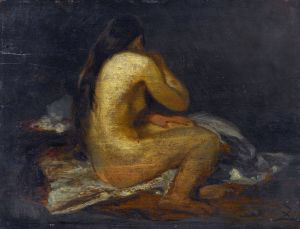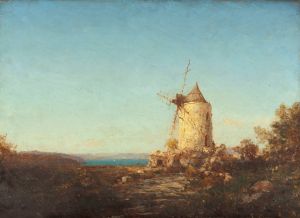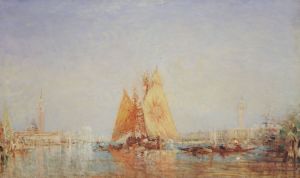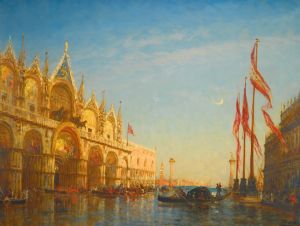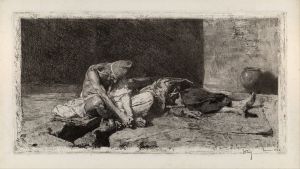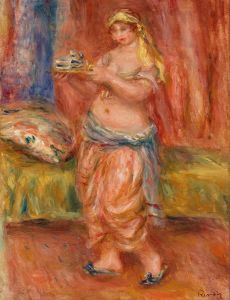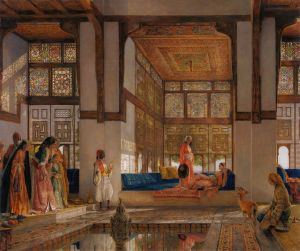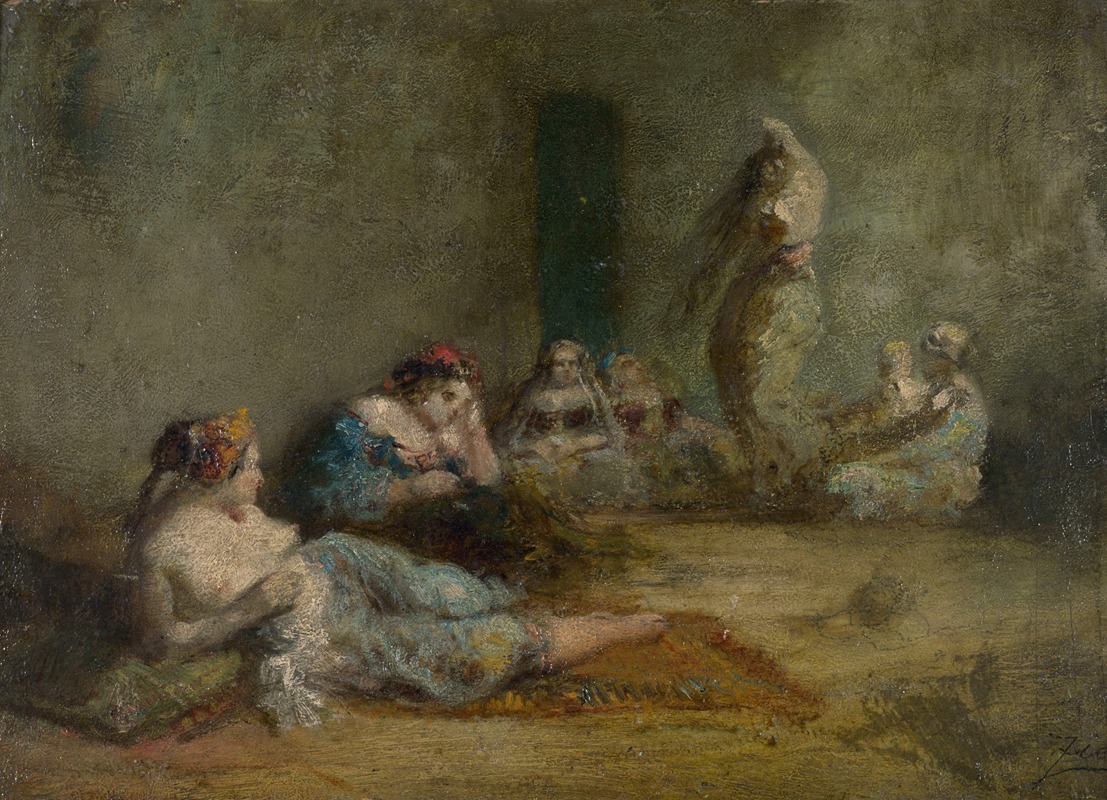
Le harem
A hand-painted replica of Félix Ziem’s masterpiece Le harem, meticulously crafted by professional artists to capture the true essence of the original. Each piece is created with museum-quality canvas and rare mineral pigments, carefully painted by experienced artists with delicate brushstrokes and rich, layered colors to perfectly recreate the texture of the original artwork. Unlike machine-printed reproductions, this hand-painted version brings the painting to life, infused with the artist’s emotions and skill in every stroke. Whether for personal collection or home decoration, it instantly elevates the artistic atmosphere of any space.
Félix Ziem was a French painter born on February 26, 1821, in Beaune, France, and he is best known for his landscapes and Orientalist scenes. Ziem's artistic career was marked by his extensive travels, particularly to Venice and the Ottoman Empire, which greatly influenced his work. One of his notable paintings is "Le harem," which reflects his fascination with the exotic and the romanticized vision of the East that was prevalent in 19th-century European art.
"Le harem" by Félix Ziem is an oil painting that exemplifies the Orientalist style, a genre that depicted the Middle Eastern, North African, and Asian cultures through a European lens. This style often romanticized and idealized these regions, portraying them as mysterious, opulent, and sensual. Ziem's "Le harem" fits within this tradition, capturing an imagined scene from a harem, a private space in a Muslim household reserved for women.
The painting showcases Ziem's skill in rendering light and color, which he developed through his plein air painting practice. His use of vibrant colors and attention to detail creates a vivid and immersive scene. In "Le harem," Ziem employs a rich palette to depict the luxurious fabrics, intricate patterns, and ornate architecture typical of Orientalist art. The composition likely includes figures of women in traditional attire, engaged in leisurely activities, which was a common theme in harem paintings of the time.
Ziem's work was influenced by his travels to the Ottoman Empire, where he was inspired by the architecture, landscapes, and daily life he encountered. His experiences in places like Constantinople (modern-day Istanbul) provided him with firsthand observations that he incorporated into his paintings. However, it is important to note that while Ziem's works are based on his travels, they also reflect the European fantasies and stereotypes of the East rather than an accurate representation of the cultures he depicted.
Félix Ziem was a member of the Barbizon School, a group of artists who advocated for painting nature directly from life. Although he is primarily known for his landscapes, his Orientalist works, including "Le harem," demonstrate his versatility and ability to capture different subjects with equal skill. Ziem's paintings were well-received during his lifetime, and he enjoyed considerable success. He was awarded the Légion d'Honneur in 1857 and continued to exhibit his works in prominent salons and galleries.
"Le harem" is a testament to Ziem's fascination with the exotic and his ability to translate his experiences into captivating visual narratives. While the painting reflects the Orientalist tendencies of its time, it also showcases Ziem's technical prowess and his unique artistic vision. Today, Ziem's works, including "Le harem," are appreciated for their historical significance and their contribution to the Orientalist genre in 19th-century European art.






